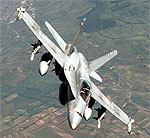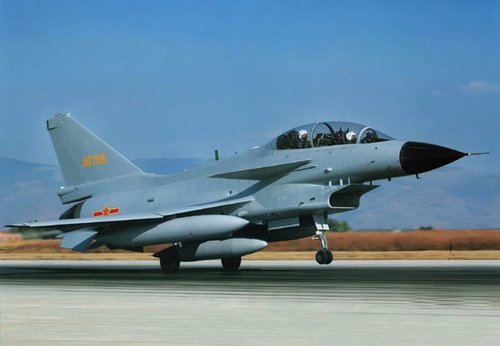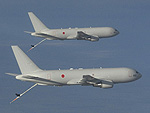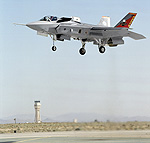Send in the Hornets

Prime Minister Stephen Harper’s recent declaration that virtually no Canadian military personnel will remain in Afghanistan beyond 2011 raises serious questions about our country’s contribution, if any, to the on-going war following our military withdrawal.
In the meantime, however, there is a need to focus attention on the shorter term.
With the army now concentrating on the operational and logistic consequences of the coming exit from Afghanistan, the government must not lose sight of its continuing obligation to the international coalition’s effort over the intervening 18 to 24 months. One option in particular needs to be considered, and it involves the air force.
During a recent visit to Afghanistan, I saw at first hand the excellent but largely unheralded work being done by our airmen and airwomen. Ranging from strategic airlift by our new C-17 transport aircraft, to tactical airlift by the venerable but overworked C-130 Hercules, through to casualty-preventing operations by our new Chinook helicopters and the smaller Griffon helicopters, and to the operation of unmanned aircraft, the Canadian air force is contributing significantly to the war against the Taliban, and this should be a source of pride for Canadians.
But one element of air power is conspicuously missing in Canada’s operational posture in Afghanistan: the employment of high-performance fighter aircraft.
Canada’s CF-18 Hornet fleet is now approaching 30 years of operational service, and this remarkable aircraft has served with great distinction throughout that time. It is familiar to Canadians primarily for its participation in NORAD, with iconic images of Canadian Hornets intercepting Soviet and Russian long-range bombers in the Arctic approaches to North America. Less well known is the fact that our CF-18s flew combat missions in the first Gulf War and later in NATO’s Kosovo campaign, in both cases earning great distinction through their impressive and casualty-free operations.
This begs a question. Why have CF-18s not been employed in Afghanistan? By all accounts it was a political decision, but the rationale has never been presented to the public. Even within the armed forces there is a reluctance to talk about the possibility, perhaps through ministerial direction, but also because of the understandable Army-focused approach to Afghanistan at National Defence Headquarters.
Whatever the reason, it is unfortunate, because Canada has much to offer to collective international operations in Afghanistan through employment of the CF-18, even on a relatively small scale. It is well known that the Taliban greatly fear detection and attack from the air, which is why every major contributor to the International Security Assistance Force (ISAF) has deployed fighter aircraft — except for Canada.
One can almost hear the anti-Afghanistan lobby proclaiming “Horrors — another escalation!” and “Canada complicit in civilian casualties,” but such objections are simply not defendable; the facts tell a different story. It is not a matter of dropping bombs indiscriminately. For one thing, modern “fighter” aircraft (the name is really a misnomer) possess a remarkable ability to perform what in military jargon is called “ISR,” standing for Intelligence, Surveillance and Reconnaissance. Using extremely advanced technology of the kind acquired by our CF-18s in a recent major upgrade program, these aircraft can give ground commanders a timely and detailed picture of the Taliban’s movements and tactical intentions. Beyond ISR, high-performance fighter-type aircraft are able to attack enemy concentrations with great precision and effect when called upon to do so by troops on the ground.
The problem of civilian casualties has been closely linked to air attack, to the point where it is a matter of great import to both the Afghan government and to the International Security Assistance Force (ISAF). To be sure, the Taliban and their propaganda machine play heavily upon our concerns about “collateral damage,” as civilian casualties are euphemistically called. As a recent United Nations report has shown, the reality is that the Taliban kill far more civilians than do coalition forces, and they, furthermore, deliberately induce civilian casualties by, for example, hiding among local populations.
ISAF, for its part, has responded to the situation by instituting methodical and extremely high priority procedures to minimize civilian deaths and injuries from air attack. In keeping with two key directives from then-ISAF Commander Gen. David McKiernan, no weapons can be discharged against a ground target without a prior assessment by the local army commander of the risk to civilians in the area and, secondly, only if positive identification of an enemy force has been established. These measures are proving to be very effective.
Incidentally, responsibility for implementing and enforcing the strict new rules was until recently vested in a Canadian, Maj.-Gen. Duff Sullivan, a Canadian fighter pilot who was the international force’s senior air commander during 2009 (and the second Canadian to occupy that position). One of his tasks was to ensure the closest possible co-ordination between land and air forces in Afghanistan, a vital ingredient in the counterinsurgency strategy and a major focus of coalition operations these days.
Canada has been asked informally on several occasions to deploy CF-18s to Afghanistan, but without a known response. The need is real, and now is the time for the government to take a good look at this option.
Militarily, it is straightforward. CF-18 aircrews and support personnel are well trained and equipped for rapid overseas deployments. A small contingent of six or eight Hornets, sent to Afghanistan for a year in support of coalition land forces would constitute a meaningful Canadian contribution to the struggle against the Taliban, at a time when our commitment to that cause is seen to be waning because of the planned 2011 withdrawal.
The near-term deployment of CF-18 Hornets to Afghanistan is a rational option that deserves quick and serious consideration by the government of Canada.
Gen. (Ret’d) Paul Manson was chief of the defence staff from 1986 to 1989. He was manager of the New Fighter Aircraft Program, leading to selection of the CF-18 in 1980.

















